
MRI (Magnetic Resonance Imaging) is a non-invasive diagnostic tool used to visualize internal structures of the human body using a powerful magnetic field and radio waves.
It is widely used in clinical settings to diagnose a range of medical conditions. However, MRI can be intimidating for patients as it involves lying still in a confined space for an extended period. Furthermore, it requires continuous monitoring of the patient to ensure their safety and well-being.
In order to address these concerns, MRI-compatible cameras can be used to monitor patients in real time without interfering with the imaging process.
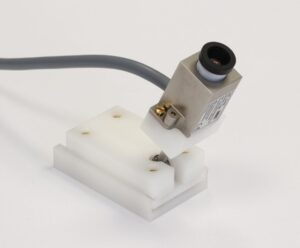
An MRI-compatible camera is a specialized device designed to be used in the MRI environment. It is made of non-ferromagnetic materials and does not produce any electromagnetic interference that could interfere with the MRI images. It is placed outside the MRI room and connected to a display screen that allows the operator to monitor the patient in real time. The camera can capture high-quality images of the patient and transmit them to the operator in real time, allowing them to monitor the patient’s movements, position, and vital signs during the scan.
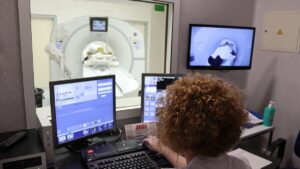
The use of an MRI-compatible camera has several benefits.
Firstly, it ensures the safety of the patient during the MRI scan. Patients undergoing MRIs are often required to lie still for extended periods of time, which can be challenging for some patients. The camera allows the operator to monitor the patient and intervene if necessary, such as if the patient becomes distressed or uncomfortable. Additionally, the camera can be used to monitor the patient’s vital signs, such as heart rate and respiration, which can provide early warning signs of any potential health issues.
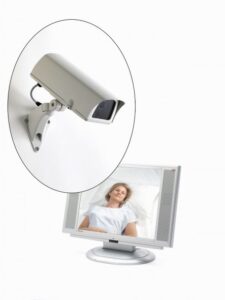
Secondly, an MRI-compatible camera can improve the patient experience. MRI can be a stressful and intimidating experience, especially for patients with claustrophobia or anxiety. The camera allows the operator to provide reassurance and support to the patient during the scan, which can help alleviate their anxiety and improve their overall experience.
Finally, an MRI-compatible camera can improve the efficiency of the imaging process. The operator can quickly identify any issues or problems that may arise during the scan and take appropriate action. This can reduce the need for repeat scans, which can save time and resources.
However, there are some limitations to the use of MRI-compatible cameras. Firstly, the camera may only be able to capture high-quality images in some situations. For example, if the patient moves rapidly or is positioned in a way that obstructs the camera’s view, the images may be blurry or unclear. Additionally, the camera may not be able to capture certain vital signs, such as blood pressure, which would require additional monitoring equipment.
However, the benefits of improved patient safety, experience, and efficiency may outweigh the additional cost.
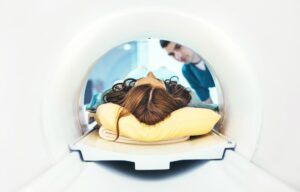
An MRI compatible camera is a camera that is safe to use in the magnetic field of an MRI machine. MRI machines generate powerful magnetic fields that can interfere with electronic devices and cause them to malfunction or even pose a risk to patient safety. Therefore, special precautions must be taken to ensure that any devices used near an MRI machine are MRI compatible.
MRI compatible cameras are designed to be used in the MRI environment without causing any interference or risk to patients. These cameras are typically made from non-magnetic materials, such as aluminium or titanium, and are shielded against electromagnetic interference. They may also have special features, such as fiber optic cables or wireless transmission, to allow for safe use in the MRI suite.
It’s important to note that not all cameras are MRI-compatible, so if you need to use a camera in the MRI environment, make sure to check with the manufacturer or supplier to ensure that it is safe to use.
An MRI-compatible camera is designed to operate safely and effectively within the strong magnetic field of a magnetic resonance imaging (MRI) scanner. These cameras are used to capture images of patients during MRI exams, allowing healthcare professionals to monitor the patient’s condition and adjust the exam as necessary.
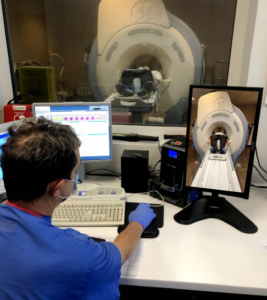
MRI-compatible cameras are typically made with non-magnetic materials and designed to operate within the narrow space of the MRI scanner bore. They must also be shielded from radiofrequency (RF) interference that can be generated by the MRI scanner.
These cameras are commonly used in research and clinical applications, such as monitoring patient vital signs during MRI-guided procedures or capturing images of the eye during MRI exams.
In conclusion, using an MRI-compatible camera can provide real-time monitoring of patients during MRI scans, improving patient safety, experience, and efficiency. While there are some limitations and additional costs associated with these cameras, their benefits make them a valuable tool in the MRI environment. As technology continues to advance, the use of MRI-compatible cameras will become even more widespread, further enhancing the safety and comfort of patients undergoing MRI scans.
©2024 Kryptonite SolutionsTM. All Rights Reserved.
Powered by: Purple Tuché